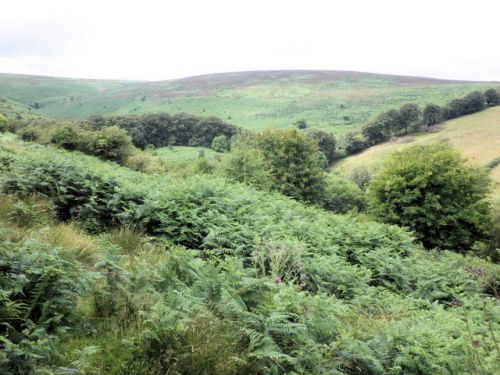Joaney How (Luccombe): Difference between revisions
m (Text replacement - "Creative Commons via Geograph" to "Creative Commons, via Geograph") |
rh>Henryfunk mNo edit summary |
||
| Line 33: | Line 33: | ||
== Notes == | == Notes == | ||
<references/> | <references/> | ||
</div><!-- | </div> | ||
<!--<div id="gallery"> | |||
{{ImgGalleryIntro}} | {{ImgGalleryIntro}} | ||
<gallery widths="195px"> | <gallery widths="195px"> | ||
File:joanie-how-roger-cornfoot-geograph.jpg|thumb|right|500px|View towards Joaney How / [http://www.geograph.org.uk/photo/4075468 Roger Cornfoot,16 Jul. 2014, Creative ommons.] | File:joanie-how-roger-cornfoot-geograph.jpg|thumb|right|500px|View towards Joaney How / [http://www.geograph.org.uk/photo/4075468 Roger Cornfoot,16 Jul. 2014, Creative ommons.] | ||
</gallery>--> | </gallery> | ||
</div>--> | |||
{{PnItemNav}} | {{PnItemNav}} | ||
Revision as of 11:55, 15 May 2020

By Henrik Thiil Nielsen, 2017-09-16. Revised by 18.226.96.61, 2020-05-15.
Joaney How, a large Bronze Age cairn on the edge of a natural terrace on the north slope of Dunkery Hill, survives as an earthwork mound more than 22 metres in diameter and c. 1.8 m high, with a much mutilated, roughly conical pile of stones whose surface stones are quite loose as if recently moved, suggesting that it may have been rebuilt after destruction.[1]
Joanie How is traditionally thought to be named after Little John,[1] while the name of Robin How, its neighbour to the southwest, is believed to refer to Robin Hood. Both of these together with a southern neighbour of the latter used to be referred to collectively as Luckham Barrows. The earliest source to include the names 'Joaney How' and 'Robin How' found so far is the 6" O.S. map from 1889 listed in the Maps section below.[1] Template:PnItemQry
Gazetteers
- Not included in Dobson, R. B., ed.; Taylor, J., ed. Rymes of Robyn Hood: an Introduction to the English Outlaw (London, 1976), pp. 293-311.
Sources
- Historic England: Round cairn cemetery on Dunkery Hill
- PastScape: Joanie How
- Exmoor National Park: MSO7397 - Joaney How Burial Cairn, Dunkery Hill.
Maps
- 6" O.S. map Somerset XXXIV.SW (1889; surveyed 1888)
- 6" O.S. map Somerset XXXIV.SW (1903; rev. 1902)
- 6" O.S. map Somerset XXXIV.SW (1903; rev. 1902) (georeferenced)
- 6" O.S. map Somerset XXXIV.SW (1930; rev. 1928).
Background
- Gray, H. St. G., 'Rude stone monuments of Exmoor', Somerset Archaeology and Natural History: the Proceedings of the Somersetshire Archaeological and Natural History Society, vol. 78 (1932), pp.121-25, see pp. 124-25. Not seen, but cf. PastScape.
- Grinsell, L.V., 'Somerset Barrows Part 1: West and South', Somerset Archaeology and Natural History: the Proceedings of the Somersetshire Archaeological and Natural History Society, vol. 113 (1968-69) pp. 1-43., see pp. 14, 15, 17, 35. Not seen, but cf. PastScape.
- The Megalithic Portal: Joaney How
- Modern Antiquarian: Dunkery Hill Barrows
- Wikipedia: Dunkery Hill.
